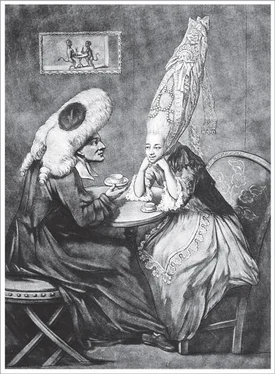Bill Bryson - At Home
Здесь есть возможность читать онлайн «Bill Bryson - At Home» весь текст электронной книги совершенно бесплатно (целиком полную версию без сокращений). В некоторых случаях можно слушать аудио, скачать через торрент в формате fb2 и присутствует краткое содержание. Жанр: Старинная литература, на английском языке. Описание произведения, (предисловие) а так же отзывы посетителей доступны на портале библиотеки ЛибКат.
- Название:At Home
- Автор:
- Жанр:
- Год:неизвестен
- ISBN:нет данных
- Рейтинг книги:4 / 5. Голосов: 1
-
Избранное:Добавить в избранное
- Отзывы:
-
Ваша оценка:
- 80
- 1
- 2
- 3
- 4
- 5
At Home: краткое содержание, описание и аннотация
Предлагаем к чтению аннотацию, описание, краткое содержание или предисловие (зависит от того, что написал сам автор книги «At Home»). Если вы не нашли необходимую информацию о книге — напишите в комментариях, мы постараемся отыскать её.
At Home — читать онлайн бесплатно полную книгу (весь текст) целиком
Ниже представлен текст книги, разбитый по страницам. Система сохранения места последней прочитанной страницы, позволяет с удобством читать онлайн бесплатно книгу «At Home», без необходимости каждый раз заново искать на чём Вы остановились. Поставьте закладку, и сможете в любой момент перейти на страницу, на которой закончили чтение.
Интервал:
Закладка:
It was called Fonthill Abbey, and it was the creation of two strange and fascinating men: William Beckford and the architect James Wyatt. Beckford was fabulously rich. His family owned plantations all across Jamaica and had dominated the West Indian sugar trade for a hundred years. Beckford’s doting mother made sure her son enjoyed every advantage in his upbringing. The eight-year-old Wolfgang Mozart was brought in to give him piano lessons. Sir William Chambers, the king’s architect, taught him to draw. Beckford’s wealth was so inexhaustibly great that when he came into his inheritance on his twenty-first birthday, he spent £40,000—an obscenely colossal sum—on the party. Byron in a poem called him “England’s wealthiest son,” probably rightly.
In 1784, Beckford became the centerpiece of the most spectacularly juicy scandal of his age when it emerged that he was involved in a pair of tempestuous, wildly dangerous dalliances. One was with Louisa Beckford, the wife of his first cousin. At the same time, he also fell for a slim and delicate youth named William Courtenay, the future ninth Earl of Devon, who was generally agreed to be the most beautiful boy in England. For a few torrid and presumably exhausting years, Beckford maintained both relationships, often under the same roof. But in the autumn of 1784 there was a sudden rupture. Beckford received or discovered a note in Courtenay’s hand that threw him into a fit of jealous rage. No record exists of what the note said, but it provoked Beckford into intemperate action. He went to Courtenay’s room and, in the slightly confused words of one of the other houseguests, “horsewhipped him, which created a noise, and the door being opened, Courtenay was discovered in his shirt, and Beckford in some posture or other—Strange story.”
Indeed.
The particular misfortune here was that Courtenay was the darling of his family—he was the only boy among fourteen siblings—and shockingly youthful. He was sixteen at the time of the incident, but may have been as young as ten when he fell under Beckford’s unwholesome sway. This was not a matter that Courtenay’s family would ever let drop, and we may take it for granted that Beckford’s cuckolded cousin was less than jubilant, too. Disgraced beyond any hope of redemption, Beckford fled to the continent. There he traveled widely and wrote, in French, a gothic novel called Vathek: An Arabian Tale , which is virtually unreadable now but was much admired in its day.
Then, in 1796, his disgrace nowhere near over, Beckford did a wholly unexpected thing. He returned to England and announced a plan to tear down the family mansion in Wiltshire, Fonthill Splendens, which was only about forty years old, and build a new house in its place—and not just any house but the largest house in England since Blenheim. It was a strange thing to do, for he had no prospect of ever filling it with company. The architect he selected for this slightly demented exercise was James Wyatt.
Wyatt is a curiously neglected figure. His only substantial biography, by Antony Dale, was published over half a century ago. He would perhaps be more famous but for the fact that so many of his buildings no longer exist. Today he is remembered more for what he destroyed than what he built.
Born in Staffordshire, the son of a farmer, Wyatt was drawn to architecture as a young man and spent six years in Italy studying architectural drawing. In 1770, aged just twenty-four, he designed the Pantheon, an exhibition hall and assembly room on Oxford Street in Londaon, which was loosely modeled on the ancient building of the same name in Rome. Horace Walpole thought it “the most beautiful edifice in England.” In 1931, the building, still beautiful though much altered, was torn down to make way for a Marks and Spencers department store.
Wyatt was an architect of talent and distinction—under George III he was appointed Surveyor of the Office of Works, in effect official architect to the nation—but a perennial shambles as a human being. He was disorganized, forgetful, perpetually dissolute, and famous for his tremendous benders. One year he missed fifty straight weekly meetings at the Office of Works. His supervision of the office was so poor that one man was discovered to have been on holiday for three years. When sober, however, he was much liked and widely praised for his charm, good nature, and architectural vision. A bust of him in the National Portrait Gallery in London shows him clean shaven (and indeed clean, a slightly unusual condition for him), with a very full head of hair and a face that seems curiously mournful or perhaps just slightly hungover.
Despite his shortcomings, he became the most sought-after architect of his day. However, he took on more commissions than he could manage and seldom gave satisfactory attention to anyone, to the endless exasperation of his clients. “If he can get with a large fire and have a bottle by him, he cares for nothing else,” wrote one of his many frustrated customers.
“There is an overwhelming consensus of opinion,” observed his biographer Dale, “that Wyatt had three outstanding faults: an entire lack of business capability, the complete incapacity for constant or intensive application … and utter improvidence.” And these were the words of a sympathetic observer. Wyatt was, in short, feckless and impossible. A client named William Windham stuck it out for eleven years on a job that should have taken a fraction of the time. “A person has some right to feel impatient,” Windham wearily wrote his absent architect at one point, “finding the principal rooms of his house near uninhabitable because he has not been able to obtain from you what would not be the work of a couple of hours.” To be a Wyatt client was to be long-suffering.
Yet Wyatt’s career was both successful and remarkably productive. Over a span of forty years, he built or refashioned a hundred country houses, extravagantly reworked five cathedrals, and did much to change the face of British architecture—not always, it must be said, for the good. His treatment of cathedrals was particularly rash and sweeping. A critic named John Carter was so exercised by Wyatt’s predilection for ripping out ancient interiors that he dubbed him “the Destroyer” and devoted 212 essays in the Gentleman’s Magazine —essentially his whole career—to attacking Wyatt’s style and character.
At Durham Cathedral, Wyatt had plans to surmount the building with a mighty spire. This never came to pass, which is perhaps no bad thing, for at Fonthill Wyatt would soon show that there were few places more dangerous to be than under a Wyatt tower. He also wished to sweep away the ancient Galilee Chapel, the last resting place of the Venerable Bede and one of the great achievements of English Norman architecture. Happily, that plan was rejected, too.
Beckford was enthralled by Wyatt’s dashing genius but driven to sputtering fury by his unreliability. Still, he somehow managed to keep the wayward architect focused enough to draw a plan, and work started shortly before the turn of the century.
Everything at Fonthill was designed on a fantastic scale. Windows stood fifty feet high. Staircases were as wide as they were long. The front door rose to a height of thirty feet but was made to seem even taller by Beckford’s practice of employing dwarf doormen. Eighty-foot curtains hung from the four arches in the Octagon, a central chamber from which radiated four long arms. The view down the central corridor stretched for over three hundred feet. The dining room table—Beckford its only occupant night after night—was fifty feet long. Every ceiling was lost in a distant gloom of hammerbeams. Fonthill was very possibly the most exhausting residence ever built—and all for a man who lived alone and was known everywhere as “the man on whom no neighbour would call.” To preserve his privacy, Beckford built a formidable wall, known as the Barrier, around the estate. It was twelve feet high, twelve miles long, and surmounted by iron spikes to deter trespassers.
Читать дальшеИнтервал:
Закладка:
Похожие книги на «At Home»
Представляем Вашему вниманию похожие книги на «At Home» списком для выбора. Мы отобрали схожую по названию и смыслу литературу в надежде предоставить читателям больше вариантов отыскать новые, интересные, ещё непрочитанные произведения.
Обсуждение, отзывы о книге «At Home» и просто собственные мнения читателей. Оставьте ваши комментарии, напишите, что Вы думаете о произведении, его смысле или главных героях. Укажите что конкретно понравилось, а что нет, и почему Вы так считаете.












